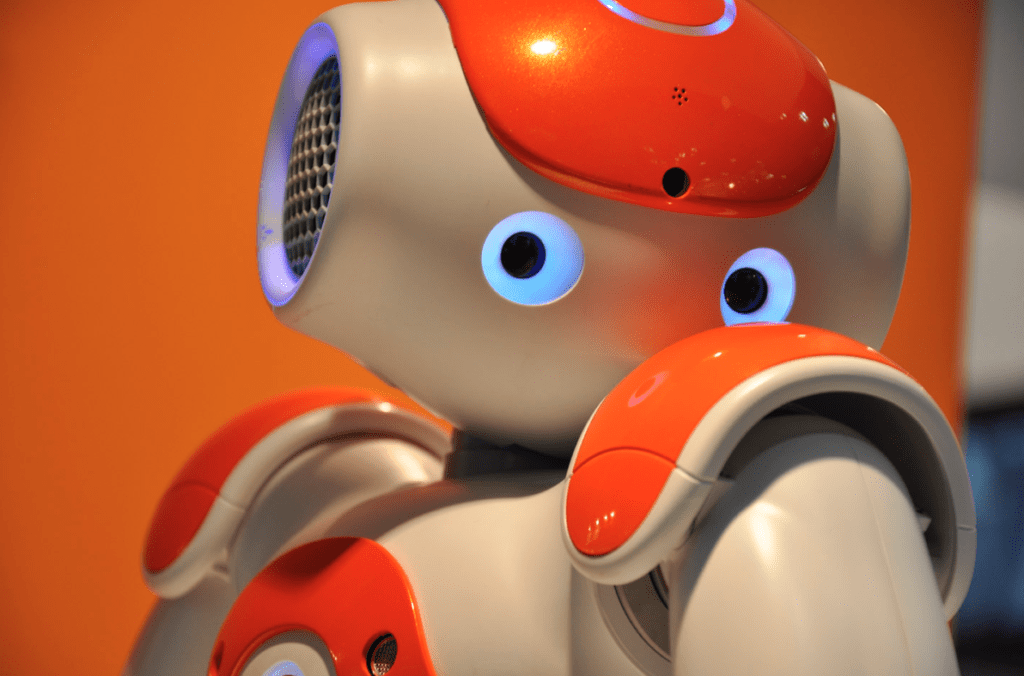At Your Service: Robotic Helpers Take Off at Airports
Share

APEX Insight: KLM, Japan Airlines and Dubai International Airport are testing socially aware, cognitive robots designed to meet, greet and assist travelers. Spencer, Nao and Amer are especially useful when it comes to performing simple, yet repetitive and time-consuming tasks, thereby freeing up airport staff to address passengers’ more complex needs.
Robots aren’t necessarily new to airports. In 2014, Indianapolis International Airport introduced a telepresence device that customer service agents could control remotely. Although interesting, it was rudimentary in design and execution, and passengers weren’t always aware that they could interact with it. That same year, the FURo (Future Robot) platform was used to debut a moving, interactive kiosk at Edmonton International Airport. Now, KLM, Japan Airlines and Dubai International Airport are testing socially aware, cognitive robots designed to free up airport staff to address passengers’ more complex needs.
Spencer the Senser
A few weeks ago, KLM completed the second testing phase for a robot named Spencer that scans passengers’ boarding passes at Amsterdam Airport Schiphol and guides them to their departure gates. “Every day, some passengers can miss their connecting flight due to delays, language barriers or because they lose their way. Considering that 70% of KLM passengers transfer at Schiphol, we are continually seeking ways to have this process run more smoothly,” said KLM chief operating officer René de Groot. “Spencer” is not a particularly Dutch name; it’s an acronym for “social situation-aware perception and action for cognitive robots.” Standing at roughly human height, Spencer looks like an automated check-in kiosk with a humanoid head. The product of a partnership between KLM and several universities and robotics labs, Spencer, the first socially aware robot to operate in an airport, was designed with the aviation industry in mind.
“KLM believes that robotics will play an increasingly important role in aviation in the coming years,” said de Groot. “We are assessing how robotics can be incorporated into our processes in various areas.” Spencer’s main task – besides delighting children, generating positive PR and providing selfie opportunities – is to perform simple, yet time-consuming tasks. “This will supplement the service offered by our airport staff, who will then have more time to assist passengers with more challenging needs,” he said.
NAO You See Me
Japan Airlines has enlisted the services of NAO, a trilingual customer service robot made by Aldebaran. At just under two feet, NAO is approachable and unintimidating, though it needs to stand on chairs to see over counters. NAO, who speaks Japanese, Mandarin and English, is undergoing multi-day test periods at Tokyo International Airport. “Through these demonstrative trials, we intend to measure the benefits surrounding the use of robot technology at the airport and also understand the differences between using a robot and conventional digital signage,” said Kiyoshi Ishizeki, JAL’s managing executive officer.
New Generation, Indeed
While automated passport control is becoming increasingly prevalent, Dubai International Airport is taking it to the next level with the Amer Robot, a moving, talking, visa-dispensing machine. Amer Robot will approach and greet arriving passengers and issue visas as needed. The robot is set to launch alongside the introduction of New Generation Emigration (NGE), a trusted-traveler program, at the airport. Similar to Global Entry and NEXUS, NGE will issue transit visas and clear approved visitors.
Going forward, the trend is toward robots with more human-like behavior. Given the queues surrounding automated check-in kiosks and the growing popularity of automated trusted-traveler services, it isn’t difficult to imagine a crowd of robots clustered around the airport concourse, ready and waiting to help you start your journey. This image only leads to another question: When will robots board the cabin itself?


